Abstract
There are two reasons to connect discussions of biological markers and pharmacokinetics. First, both tend to open up the black box between exposure and effect. Doing this promises more complete scientific understanding than simple input-output analysis, the possibility of better mechanism-based projection of risk beyond the range of possible direct observations, and the possibility of greater sensitivity of analysis, in some cases going from the organism to the cell as the unit of analysis. Second, pharmacokinetic (or similar pharmacodynamic) analysis will often be essential for appropriate interpretation of biological marker information. One needs some sort of dynamic model of the generation and loss of the marker in relation to exposure in order to use a biological marker, either to form a better measure of dosage (either accumulated past dose, or biologically relevant dose), or to make an improved prediction of effect. (For example, the use of a blood cadmium level alone to predict kidney effects might be inferior to predictions based on aggregate past accumulation of cadmium in the kidney, based on the past history of cadmium blood levels x time). Several examples will be discussed of the use of biomarkers and pharmacokinetics in risk assessments for both carcinogenesis and other effects.
Full text
PDF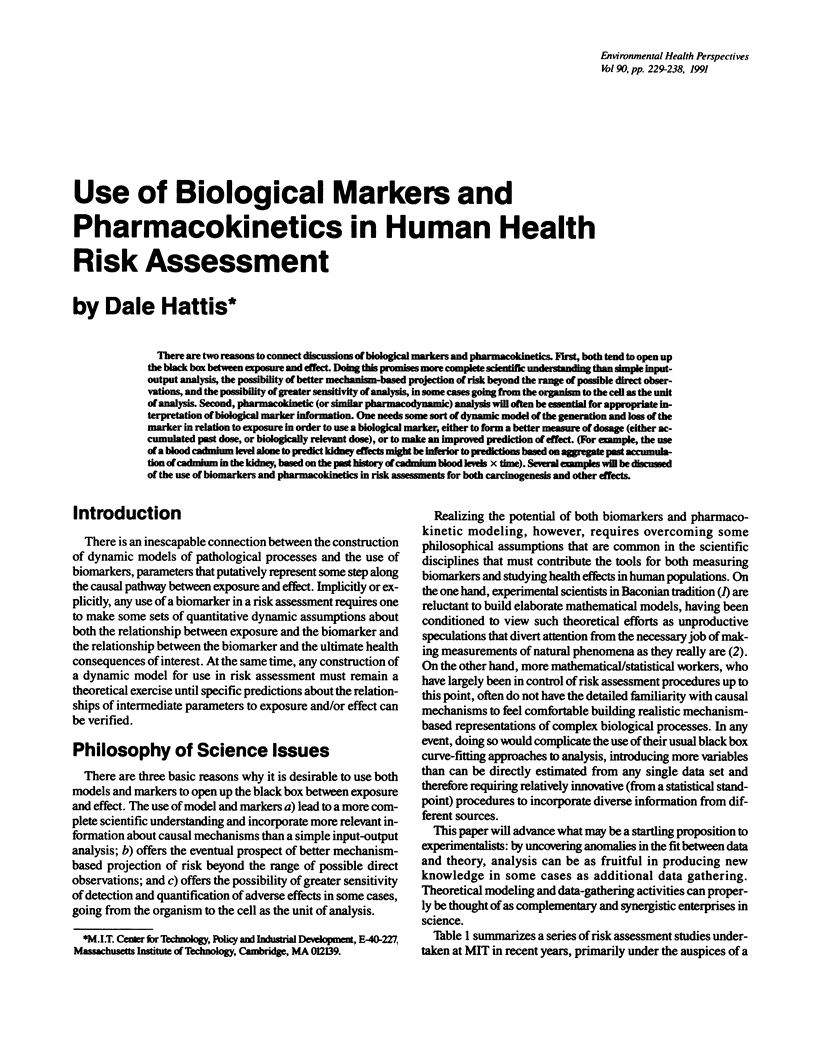
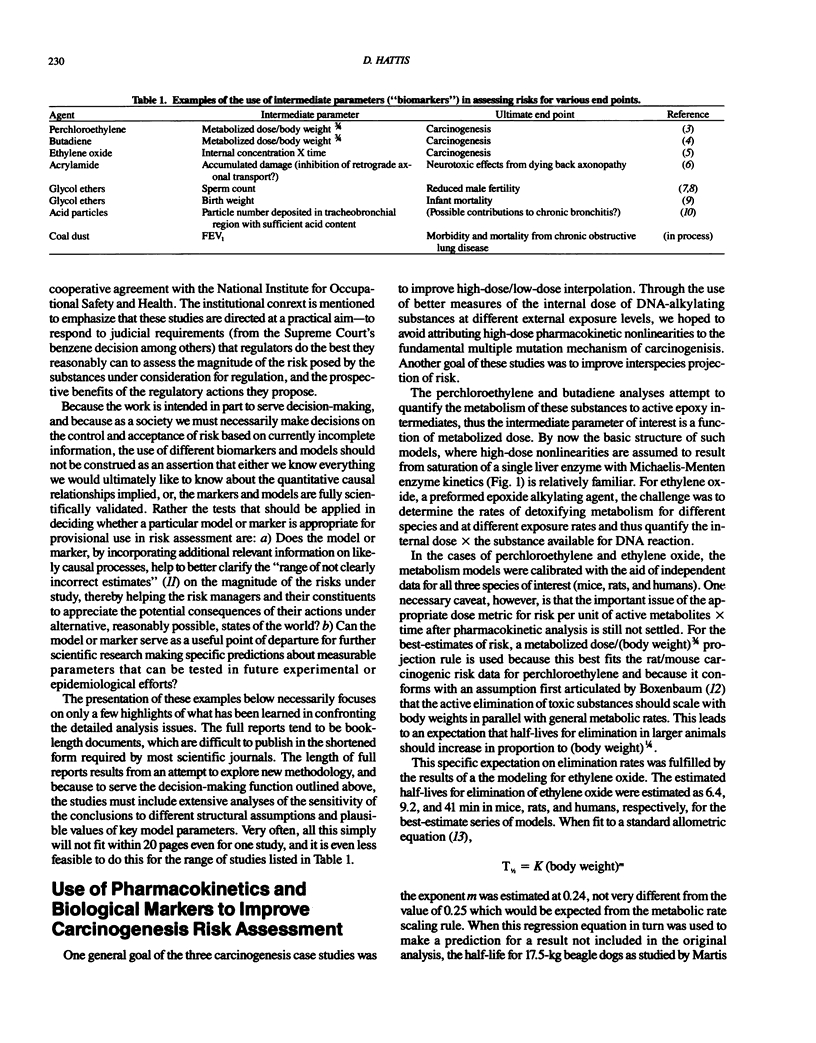
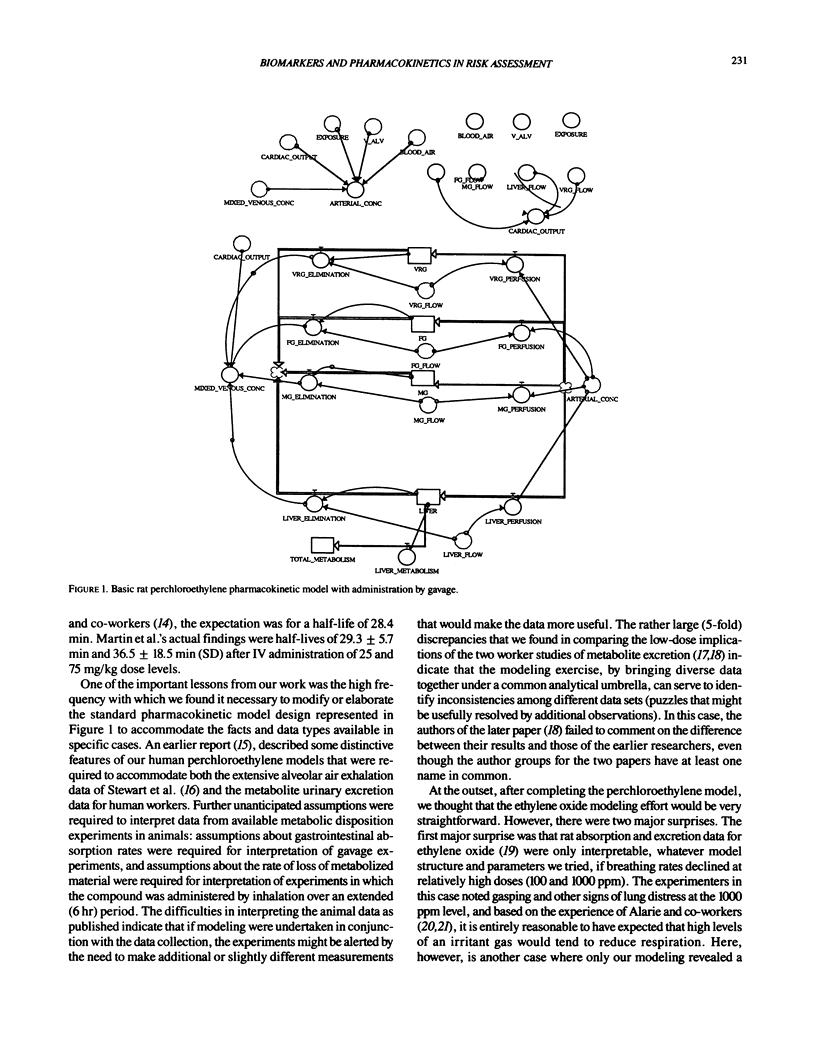
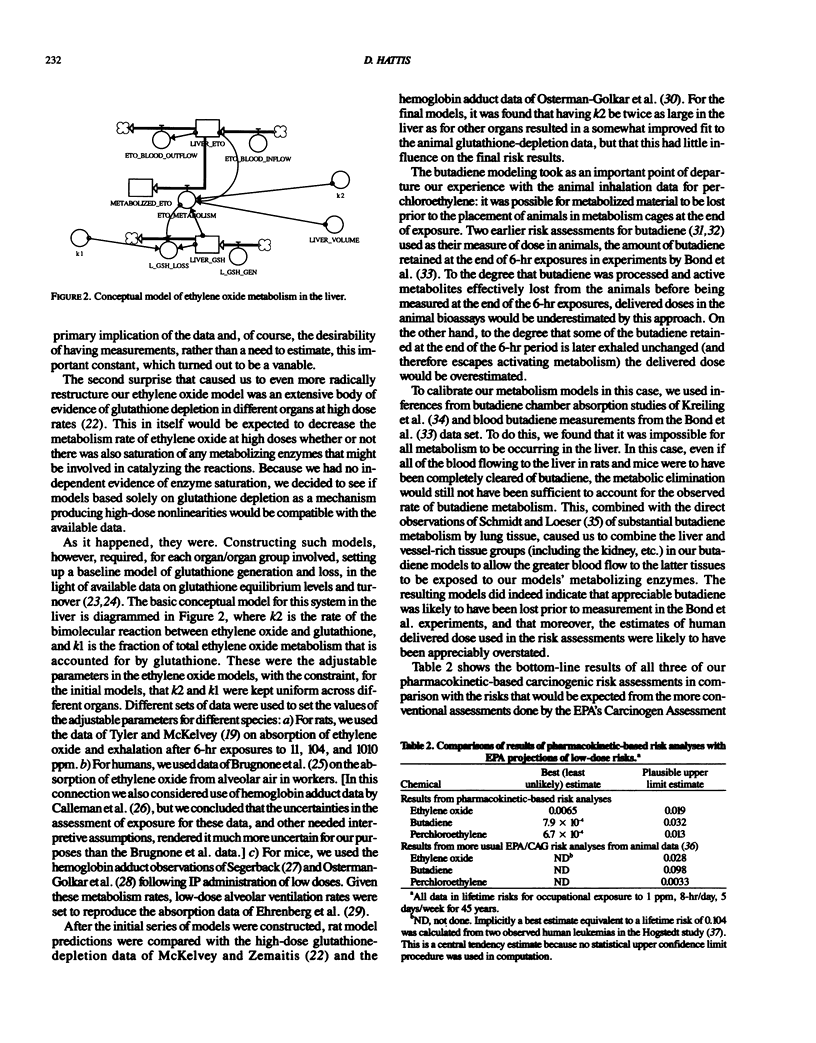
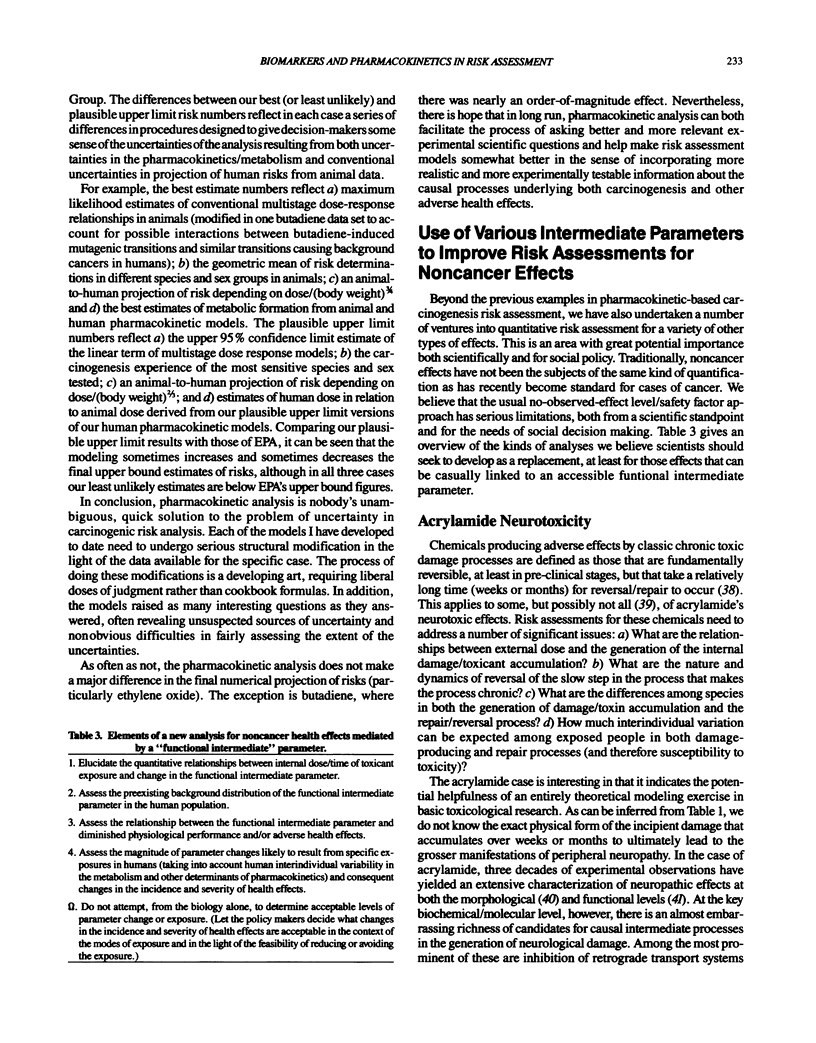
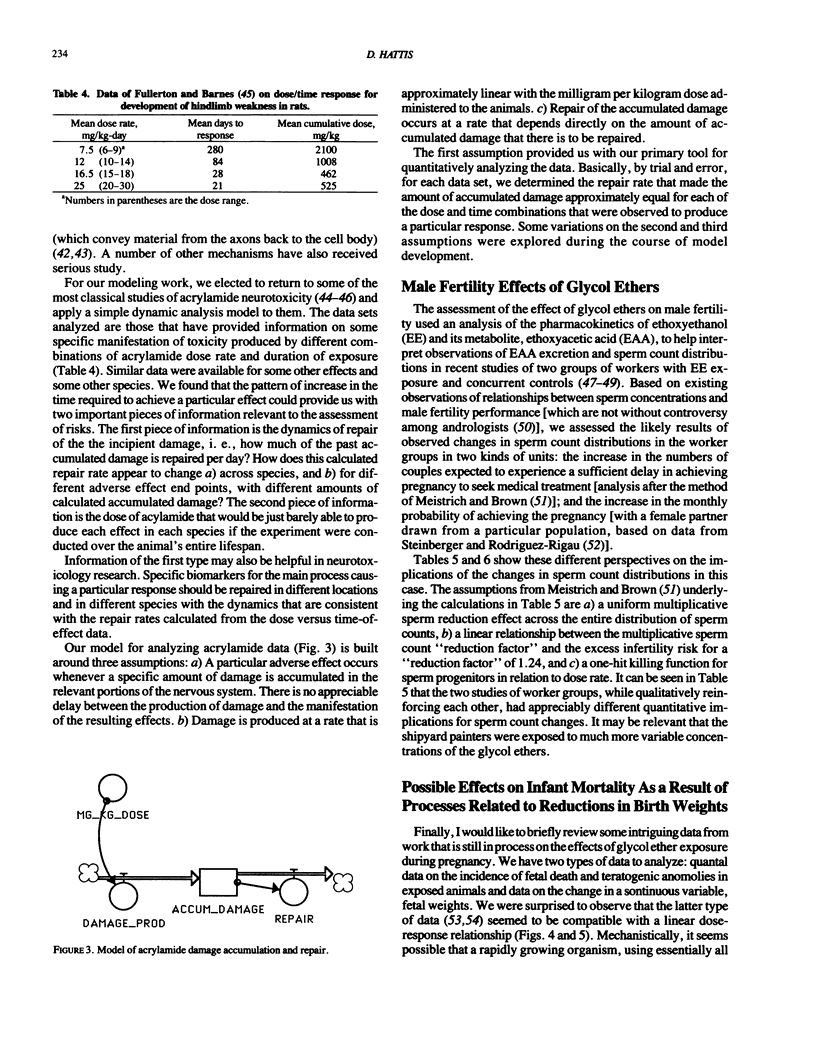
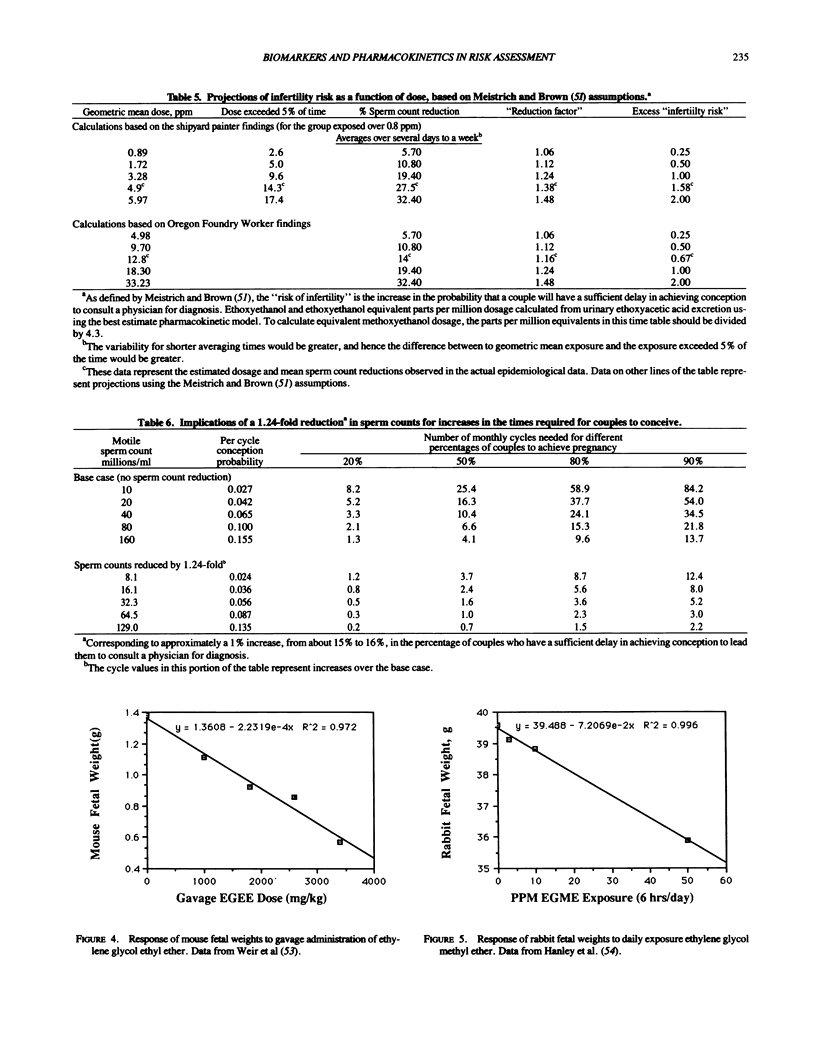
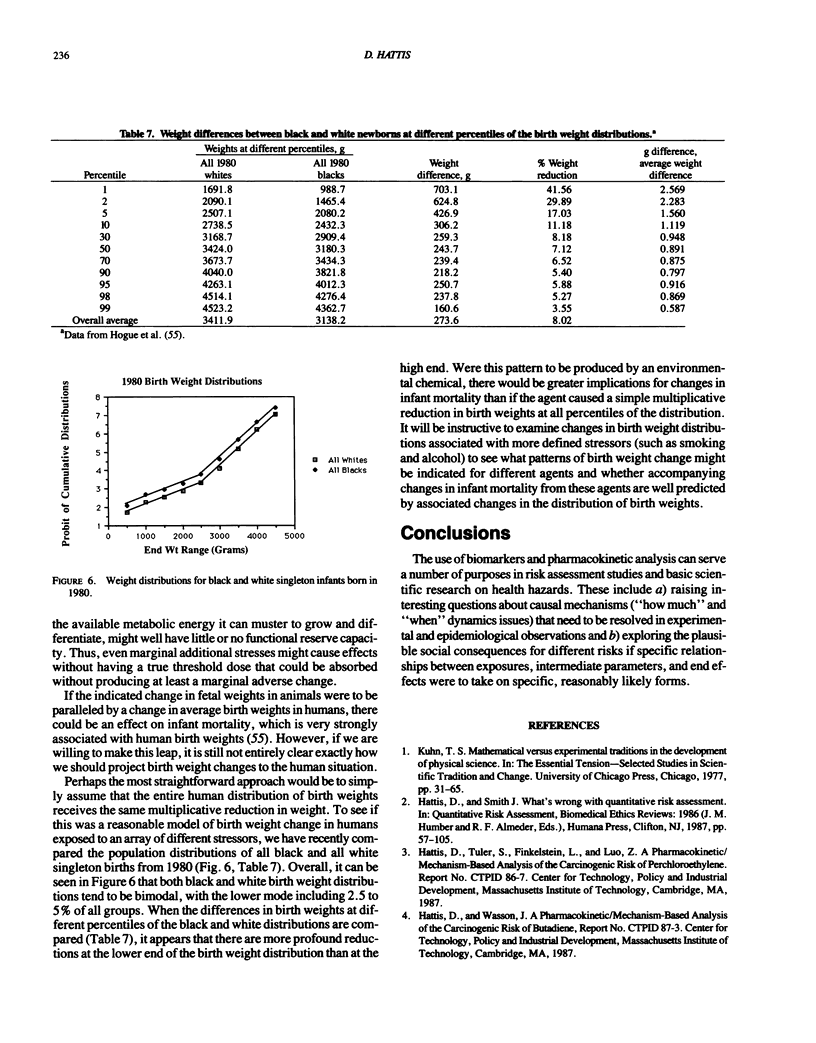
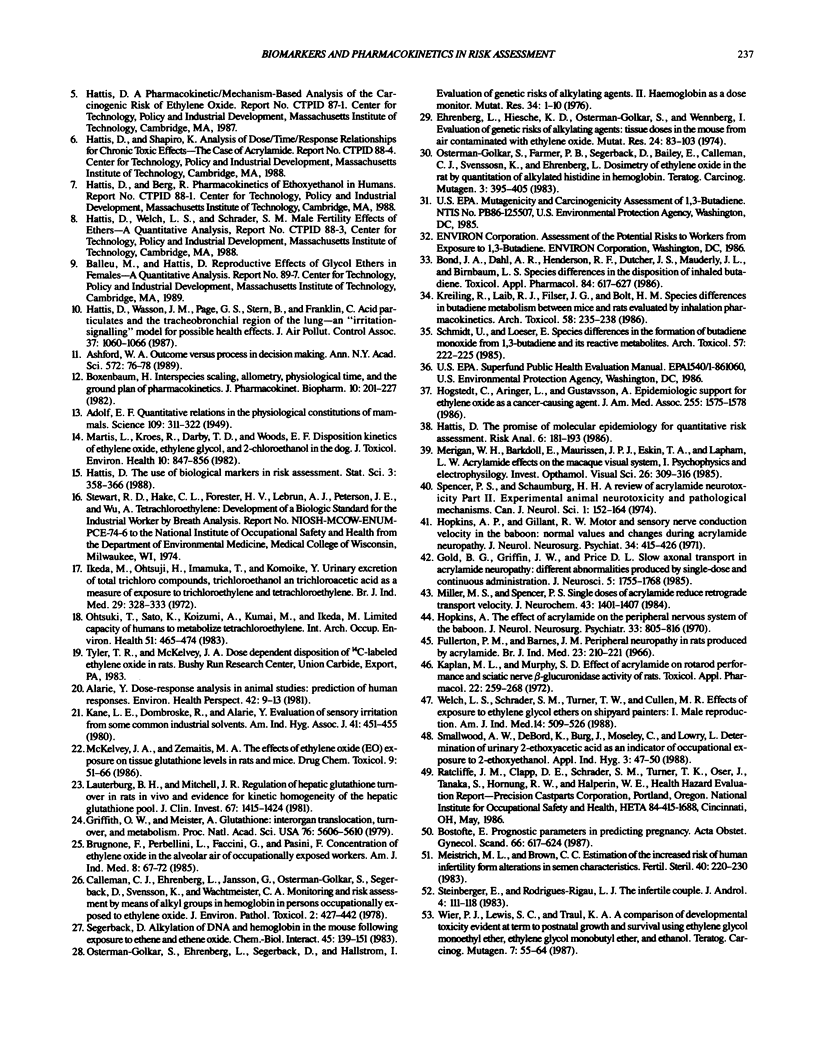

Selected References
These references are in PubMed. This may not be the complete list of references from this article.
- Alarie Y. Dose-response analysis in animal studies: prediction of human responses. Environ Health Perspect. 1981 Dec;42:9–13. doi: 10.1289/ehp.81429. [DOI] [PMC free article] [PubMed] [Google Scholar]
- Ashford N. A. Outcome versus process in decision making. Ann N Y Acad Sci. 1989;572:76–88. doi: 10.1111/j.1749-6632.1989.tb13575.x. [DOI] [PubMed] [Google Scholar]
- Bond J. A., Dahl A. R., Henderson R. F., Dutcher J. S., Mauderly J. L., Birnbaum L. S. Species differences in the disposition of inhaled butadiene. Toxicol Appl Pharmacol. 1986 Jul;84(3):617–627. doi: 10.1016/0041-008x(86)90268-1. [DOI] [PubMed] [Google Scholar]
- Bostofte E. Prognostic parameters in predicting pregnancy. A twenty-year follow-up study comprising semen analysis in 765 men of infertile couples evaluated by the Cox regression model. Acta Obstet Gynecol Scand. 1987;66(7):617–624. doi: 10.3109/00016348709022067. [DOI] [PubMed] [Google Scholar]
- Boxenbaum H. Interspecies scaling, allometry, physiological time, and the ground plan of pharmacokinetics. J Pharmacokinet Biopharm. 1982 Apr;10(2):201–227. doi: 10.1007/BF01062336. [DOI] [PubMed] [Google Scholar]
- Brugnone F., Perbellini L., Faccini G., Pasini F. Concentration of ethylene oxide in the alveolar air of occupationally exposed workers. Am J Ind Med. 1985;8(1):67–72. doi: 10.1002/ajim.4700080109. [DOI] [PubMed] [Google Scholar]
- Calleman C. J., Ehrenberg L., Jansson B., Osterman-Golkar S., Segerbäck D., Svensson K., Wachtmeister C. A. Monitoring and risk assessment by means of alkyl groups in hemoglobin in persons occupationally exposed to ethylene oxide. J Environ Pathol Toxicol. 1978 Nov-Dec;2(2):427–442. [PubMed] [Google Scholar]
- Ehrenberg L., Hiesche K. D., Osterman-Golkar S., Wenneberg I. Evaluation of genetic risks of alkylating agents: tissue doses in the mouse from air contaminated with ethylene oxide. Mutat Res. 1974 Aug;24(2):83–103. doi: 10.1016/0027-5107(74)90123-7. [DOI] [PubMed] [Google Scholar]
- Fullerton P. M., Barnes J. M. Peripheral neuropathy in rats produced by acrylamide. Br J Ind Med. 1966 Jul;23(3):210–221. doi: 10.1136/oem.23.3.210. [DOI] [PMC free article] [PubMed] [Google Scholar]
- Gold B. G., Griffin J. W., Price D. L. Slow axonal transport in acrylamide neuropathy: different abnormalities produced by single-dose and continuous administration. J Neurosci. 1985 Jul;5(7):1755–1768. doi: 10.1523/JNEUROSCI.05-07-01755.1985. [DOI] [PMC free article] [PubMed] [Google Scholar]
- Griffith O. W., Meister A. Glutathione: interorgan translocation, turnover, and metabolism. Proc Natl Acad Sci U S A. 1979 Nov;76(11):5606–5610. doi: 10.1073/pnas.76.11.5606. [DOI] [PMC free article] [PubMed] [Google Scholar]
- Hanley T. R., Jr, Young J. T., John J. A., Rao K. S. Ethylene glycol monomethyl ether (EGME) and propylene glycol monomethyl ether (PGME): inhalation fertility and teratogenicity studies in rats, mice and rabbits. Environ Health Perspect. 1984 Aug;57:7–12. doi: 10.1289/ehp.84577. [DOI] [PMC free article] [PubMed] [Google Scholar]
- Hattis D. B. The promise of molecular epidemiology for quantitative risk assessment. Risk Anal. 1986 Jun;6(2):181–193. doi: 10.1111/j.1539-6924.1986.tb00206.x. [DOI] [PubMed] [Google Scholar]
- Hattis D., Wasson J. M., Page G. S., Stern B., Franklin C. A. Acid particles and the tracheobronchial region of the respiratory system--an "irritation-signaling" model for possible health effects. JAPCA. 1987 Sep;37(9):1060–1066. doi: 10.1080/08940630.1987.10466304. [DOI] [PubMed] [Google Scholar]
- Hogstedt C., Aringer L., Gustavsson A. Epidemiologic support for ethylene oxide as a cancer-causing agent. JAMA. 1986 Mar 28;255(12):1575–1578. [PubMed] [Google Scholar]
- Hogue C. J., Buehler J. W., Strauss L. T., Smith J. C. Overview of the National Infant Mortality Surveillance (NIMS) project--design, methods, results. Public Health Rep. 1987 Mar-Apr;102(2):126–138. [PMC free article] [PubMed] [Google Scholar]
- Hopkins A. P., Gilliatt R. W. Motor and sensory nerve conduction velocity in the baboon: normal values and changes during acrylamide neuropathy. J Neurol Neurosurg Psychiatry. 1971 Aug;34(4):415–426. doi: 10.1136/jnnp.34.4.415. [DOI] [PMC free article] [PubMed] [Google Scholar]
- Hopkins A. The effect of acrylamide on the peripheral nervous system of the baboon. J Neurol Neurosurg Psychiatry. 1970 Dec;33(6):805–816. doi: 10.1136/jnnp.33.6.805. [DOI] [PMC free article] [PubMed] [Google Scholar]
- Ikeda M., Otsuji H., Imamura T., Komoike Y. Urinary excretion of total trichloro-compounds, trichloroethanol, and trichloroacetic acid as a measure of exposure to trichloroethylene and tetrachloroethylene. Br J Ind Med. 1972 Jul;29(3):328–333. doi: 10.1136/oem.29.3.328. [DOI] [PMC free article] [PubMed] [Google Scholar]
- Kane L. E., Dombroske R., Alarie Y. Evaluation of sensory irritation from some common industrial solvents. Am Ind Hyg Assoc J. 1980 Jun;41(6):451–455. doi: 10.1080/15298668091425022. [DOI] [PubMed] [Google Scholar]
- Kaplan M. L., Murphy S. D. Effect of acrylamide on rotarod performance and sciatic nerve -glucuronidase activity of rats. Toxicol Appl Pharmacol. 1972 Jun;22(2):259–268. doi: 10.1016/0041-008x(72)90176-7. [DOI] [PubMed] [Google Scholar]
- Kreiling R., Laib R. J., Filser J. G., Bolt H. M. Species differences in butadiene metabolism between mice and rats evaluated by inhalation pharmacokinetics. Arch Toxicol. 1986 Apr;58(4):235–238. doi: 10.1007/BF00297112. [DOI] [PubMed] [Google Scholar]
- Lauterburg B. H., Mitchell J. R. Regulation of hepatic glutathione turnover in rats in vivo and evidence for kinetic homogeneity of the hepatic glutathione pool. J Clin Invest. 1981 May;67(5):1415–1424. doi: 10.1172/JCI110170. [DOI] [PMC free article] [PubMed] [Google Scholar]
- Martis L., Kroes R., Darby T. D., Woods E. F. Disposition kinetics of ethylene oxide, ethylene glycol, and 2-chlorethanol in the dog. J Toxicol Environ Health. 1982 Oct-Nov;10(4-5):847–856. doi: 10.1080/15287398209530299. [DOI] [PubMed] [Google Scholar]
- McKelvey J. A., Zemaitis M. A. The effects of ethylene oxide (EO) exposure on tissue glutathione levels in rats and mice. Drug Chem Toxicol. 1986;9(1):51–66. doi: 10.3109/01480548609042830. [DOI] [PubMed] [Google Scholar]
- Meistrich M. L., Brown C. C. Estimation of the increased risk of human infertility from alterations in semen characteristics. Fertil Steril. 1983 Aug;40(2):220–230. doi: 10.1016/s0015-0282(16)47241-9. [DOI] [PubMed] [Google Scholar]
- Merigan W. H., Barkdoll E., Maurissen J. P., Eskin T. A., Lapham L. W. Acrylamide effects on the macaque visual system. I. Psychophysics and electrophysiology. Invest Ophthalmol Vis Sci. 1985 Mar;26(3):309–316. [PubMed] [Google Scholar]
- Miller M. S., Spencer P. S. Single doses of acrylamide reduce retrograde transport velocity. J Neurochem. 1984 Nov;43(5):1401–1408. doi: 10.1111/j.1471-4159.1984.tb05400.x. [DOI] [PubMed] [Google Scholar]
- Osterman-Golkar S., Ehrenberg L., Segerbäck D., Hällström I. Evaluation of genetic risks of alkylating agents. II. Haemoglobin as a dose monitor. Mutat Res. 1976 Jan;34(1):1–10. doi: 10.1016/0027-5107(76)90256-6. [DOI] [PubMed] [Google Scholar]
- Osterman-Golkar S., Farmer P. B., Segerbäck D., Bailey E., Calleman C. J., Svensson K., Ehrenberg L. Dosimetry of ethylene oxide in the rat by quantitation of alkylated histidine in hemoglobin. Teratog Carcinog Mutagen. 1983;3(5):395–405. doi: 10.1002/1520-6866(1990)3:5<395::aid-tcm1770030502>3.0.co;2-d. [DOI] [PubMed] [Google Scholar]
- Schmidt U., Loeser E. Species differences in the formation of butadiene monoxide from 1,3-butadiene. Arch Toxicol. 1985 Sep;57(4):222–225. doi: 10.1007/BF00324781. [DOI] [PubMed] [Google Scholar]
- Segerbäck D. Alkylation of DNA and hemoglobin in the mouse following exposure to ethene and ethene oxide. Chem Biol Interact. 1983 Jul 15;45(2):139–151. doi: 10.1016/0009-2797(83)90064-9. [DOI] [PubMed] [Google Scholar]
- Spencer P. S., Schaumburg H. H. A review of acrylamide neurotoxicity. Part II. Experimental animal neurotoxicity and pathologic mechanisms. Can J Neurol Sci. 1974 Aug;1(3):152–169. doi: 10.1017/s0317167100119201. [DOI] [PubMed] [Google Scholar]
- Steinberger E., Rodriguez-Rigau L. J. The infertile couple. J Androl. 1983 Mar-Apr;4(2):111–118. doi: 10.1002/j.1939-4640.1983.tb00733.x. [DOI] [PubMed] [Google Scholar]
- Welch L. S., Schrader S. M., Turner T. W., Cullen M. R. Effects of exposure to ethylene glycol ethers on shipyard painters: II. Male reproduction. Am J Ind Med. 1988;14(5):509–526. doi: 10.1002/ajim.4700140503. [DOI] [PubMed] [Google Scholar]
- Wier P. J., Lewis S. C., Traul K. A. A comparison of developmental toxicity evident at term to postnatal growth and survival using ethylene glycol monoethyl ether, ethylene glycol monobutyl ether and ethanol. Teratog Carcinog Mutagen. 1987;7(1):55–64. doi: 10.1002/tcm.1770070108. [DOI] [PubMed] [Google Scholar]


